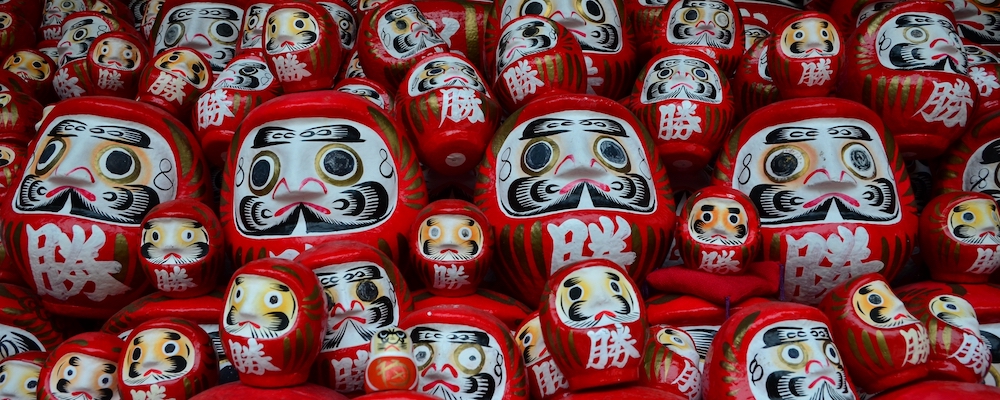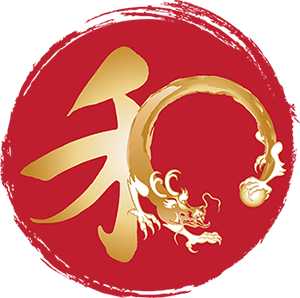READING TIME: 5 MINUTES.
What is a Daruma doll?
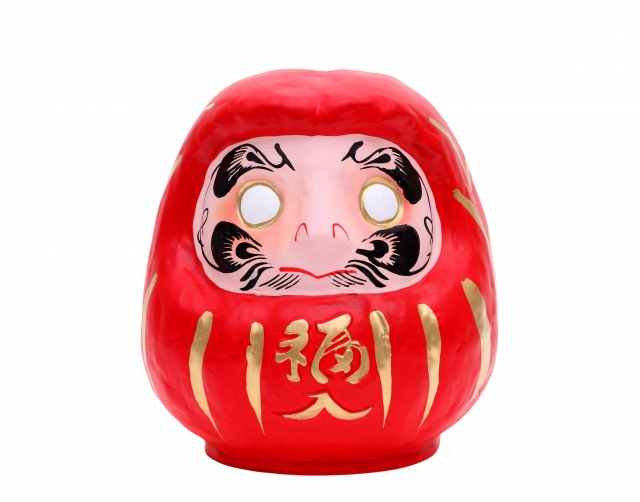
If you have visited Japan you probably have seen these round, typically red dolls at temples and shrines. They come in a variety of sizes and may vary in color too, depending on the region of the country you are visiting. Daruma dolls are made of papier-mache and are hollow inside. They are light in weight and with their bright color and original design, they are a popular gift to take back home as a souvenir from Japan. What not many people know is that Daruma is more than a decoration or a toy. The dolls have been used for centuries as a talisman for good luck and have a design rich in symbolism. In this blog I will share the legend about Bodhidarma, the monk the dolls were named after, the reason why their eyes are left blank, how to use them to set your intention, and more.
The legend of Bodhidharma
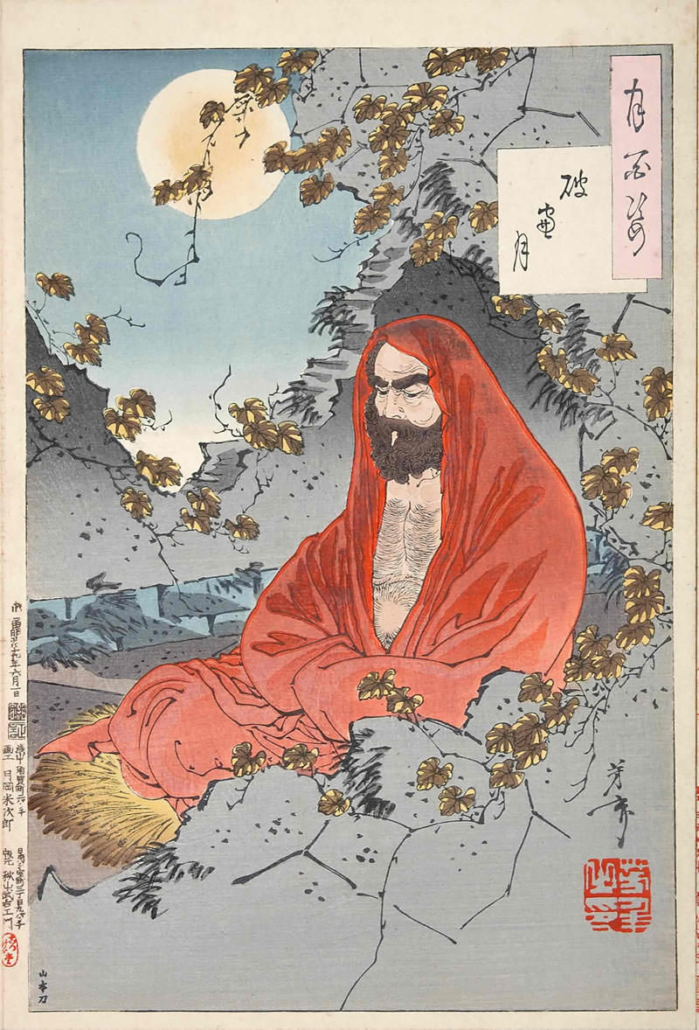
Bodhidharma, painting by Yoshitoshi (1887)
The Daruma dolls are named after Bodhidharma, the Buddhist monk who is traditionally credited for bringing Zen Buddhism to China. The legend says that Bodhidharma was famous among other things for his practice of gazing at walls (the original Zazen.) The legend claims that he sat in meditation for a period 9 years which caused his arms and legs to fall off. The round shape of the Daruma doll is a reflection of that legend. In paintings, Bodhidharma is often depicted as a wide-eyed, profusely bearded person. The same features can be seen on the face of the Daruma dolls too.
The first Daruma dolls date back to the mid 18 century. The story goes that the founder of the Darumadera temple in Gunma prefecture would draw New Year’s charms depicting Bodhidharma. The parishioners would keep these charms ‘to bring happiness and prosperity and ward off accidents and misfortune.’
It is believed that the first Daruma figurines originated from that region when one of the priests found a solution to handle the constant requests for new charms. The charms were valid only for a year and had to be renewed constantly. The priest enstrusted the parishioners with the making of their own Daruma charms. The temple left wooden block molds for the people to use. The peasants used these molds to make papier-mache charms. [“Omocha”: Things To Play (Or Not To Play) With]
Much more than a toy: the symbolism of the Daruma
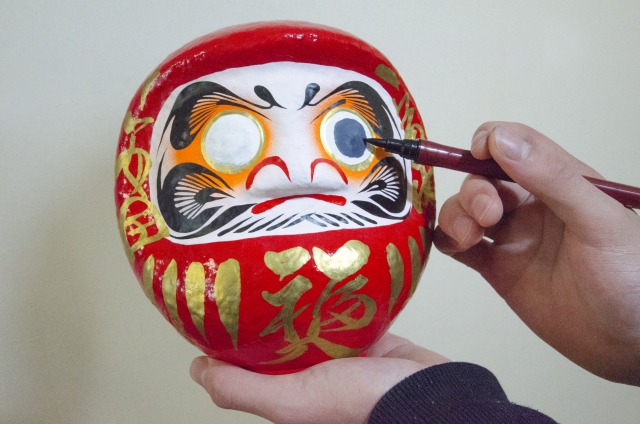
Intended to serve as a powerful charm, there is a lot of symbolism embedded in the Daruma dolls. One example of that is their shape. Traditionally Darumas were made with a round weighted bottom so they would return to an upright position when tilted over. This characteristic has come to symbolize the ability to succeed, to overcome challenges, and to recover from misfortune.
Another important symbol is the eyes of the dolls, which when sold are often blank. There are two reasons behind that. The first is that the blank eyes symbolize clarity – there is nothing to impair one’s vision. The second is that the Daruma dolls are often used as a tool for setting an intention. One of the eyes of the doll is filled in when setting the goal and the other when the goal is accomplished. In the meantime, the Daruma is put on a shelf or an altar where it can be easily seen to remind its recipient of what they had set themselves to achieve. It is also said that filling in only one of the eyes entices the Daruma to help you in your endeavor so it will get its second eye filled in too!
Choosing your Daruma
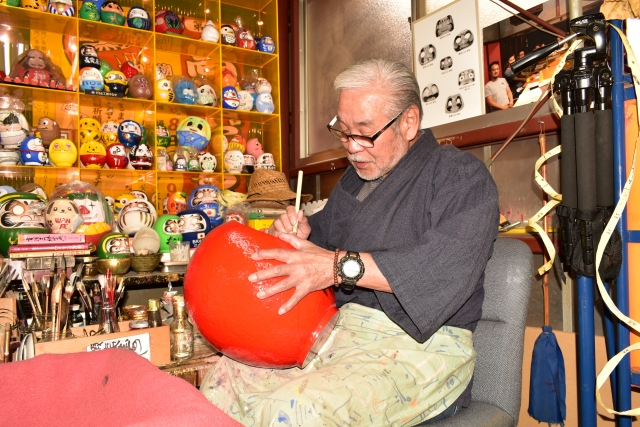 I love the Daruma dolls for their bright colors, for their unique expressions, and for the powerful symbols they embody. They are a must item to bring home from my hatsumode – the first visit to the shrine for the year. If you are choosing a Daruma doll for yourself look for the character painted on its front – it shows what the purpose of the doll is. Very often that is the character 福 (fuku). This is the one people choose when they want to invite good luck into their home. Another character that is common is 勝 (katsu) which means to win or succeed. This is a Daruma doll popular among students who have important upcoming exams or among those who have a challenge they want to overcome.
I love the Daruma dolls for their bright colors, for their unique expressions, and for the powerful symbols they embody. They are a must item to bring home from my hatsumode – the first visit to the shrine for the year. If you are choosing a Daruma doll for yourself look for the character painted on its front – it shows what the purpose of the doll is. Very often that is the character 福 (fuku). This is the one people choose when they want to invite good luck into their home. Another character that is common is 勝 (katsu) which means to win or succeed. This is a Daruma doll popular among students who have important upcoming exams or among those who have a challenge they want to overcome.
This year I discovered a pretty little Daruma shop near the Jindaiji temple, that had a variety of beautiful handmade dolls. They came in different sizes and colors – some of them were tiny while others were huge. If you are in the Jindaiji temple area check it out for some original designs. Or, if you are on one of my Jindaiji virtual tours and would like to see the shop let me know. I will be happy to take you there so you can see more of this wonderful Japanese tradition.
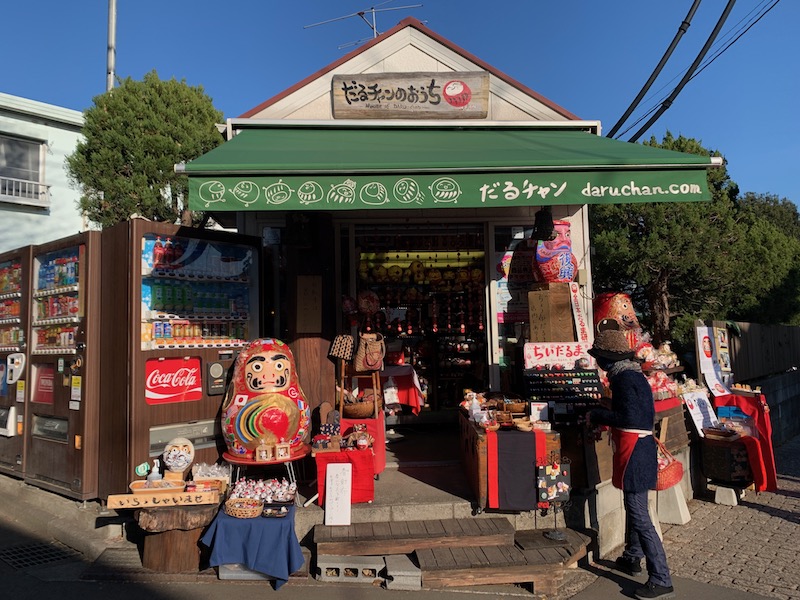
* The Spirit of Japan Tours organizes private and group tours to temples and sites where you can experience the richness of Japan’s spirituality and traditions. Please, message us for more information about our future tours.

